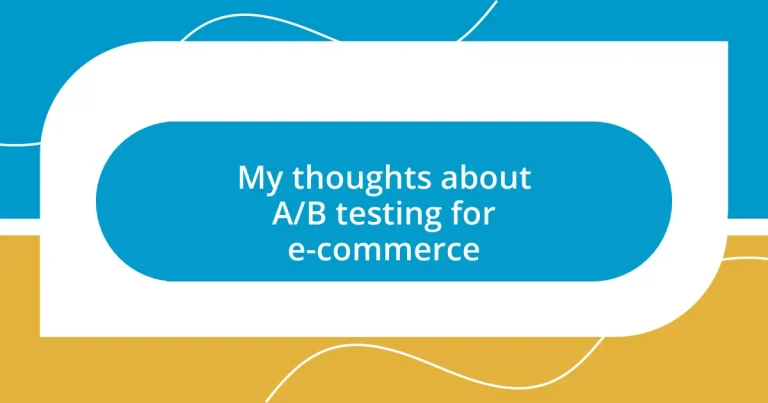Key takeaways:
- A/B testing offers clear insights into customer preferences and fosters a culture of continuous improvement by turning data into actionable strategies.
- Essential steps for effective A/B testing include defining a clear hypothesis, choosing relevant KPIs, and analyzing results for statistical significance.
- Common pitfalls in A/B testing include running tests for insufficient duration, testing multiple variables at once, and failing to visualize the data for better understanding.
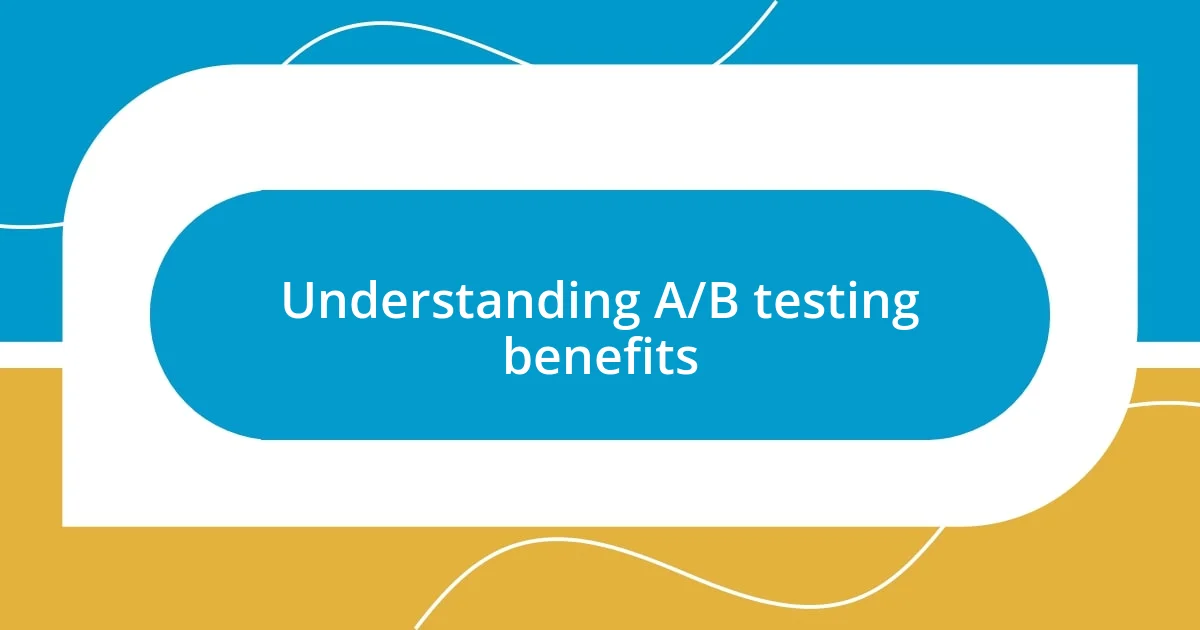
Understanding A/B testing benefits
One of the most significant benefits of A/B testing is its ability to provide clear insights into customer preferences. I remember one e-commerce project I worked on where we tested two different product page layouts. The results were eye-opening; one design led to a 25% increase in conversions. Imagine the impact of such a subtle change!
Beyond just numbers, A/B testing gives you the confidence to make informed decisions. Have you ever made a change on your site without solid data backing you up? That uncertainty can be stressful! With A/B testing, you take the guesswork out and rely on real user behavior, which can be incredibly empowering.
Finally, it fosters a culture of continuous improvement. Each test helps refine your understanding of what resonates with your audience, creating a cycle of feedback and adaptation. I often find myself excited about every new idea; the testing process feels like a collaborative conversation with customers. It’s thrilling to ask, “What do you think?” and actually receive concrete, actionable answers that shape your strategy.
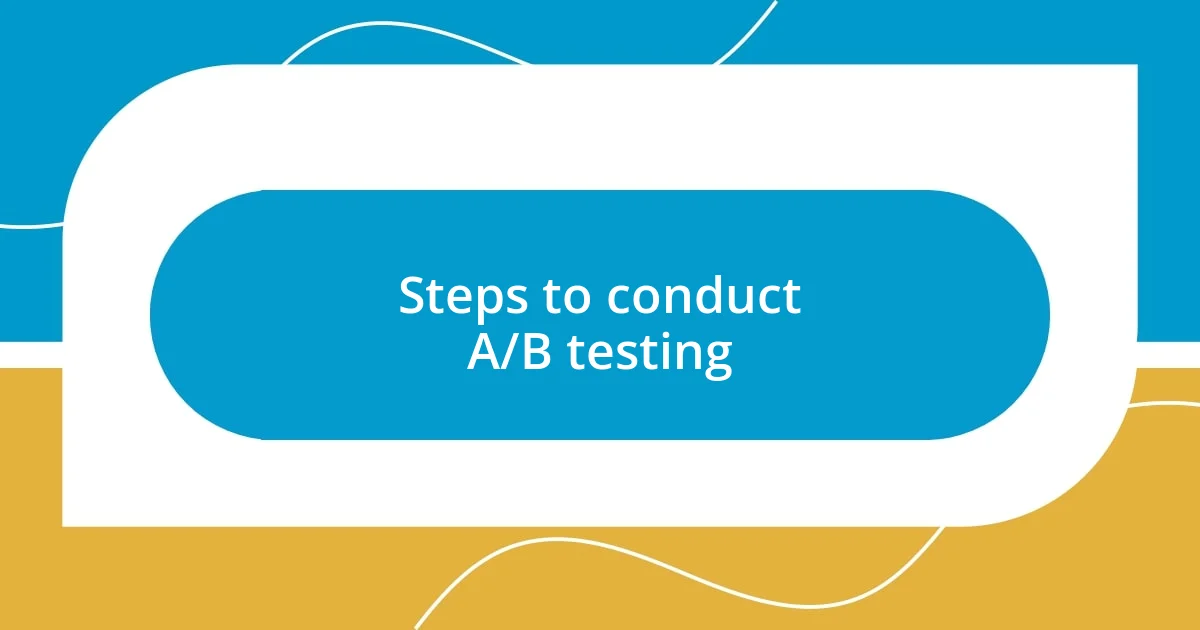
Steps to conduct A/B testing
To conduct effective A/B testing, I recommend starting with a clear hypothesis that defines what you aim to test. For instance, when I wanted to optimize the checkout process on my e-commerce site, I proposed that changing the color of the call-to-action button would increase clicks. By framing the test this way, you set a focused goal, allowing for more precise outcomes.
Next, it’s essential to identify your key performance indicators (KPIs) to measure the success of the test. In my experience, simply using overall conversion rates can be misleading. Instead, consider factors like click-through rates and time spent on the page. This nuanced approach provided me with a fuller picture of user behavior in my tests.
Lastly, analyze the data and draw conclusions based on statistical significance. I recall a time when I was so eager to declare one variant a winner that I nearly overlooked the importance of statistical validity. Waiting for the right sample size pays off; it’s all about making decisions that are rooted in solid evidence, not just trends or hunches.
| Step | Description |
|---|---|
| 1. Define Hypothesis | Identify what you’re testing and why, based on previous insights. |
| 2. Choose KPIs | Select relevant metrics to gauge the test’s effectiveness. |
| 3. Analyze Results | Examine data for statistical significance before making conclusions. |
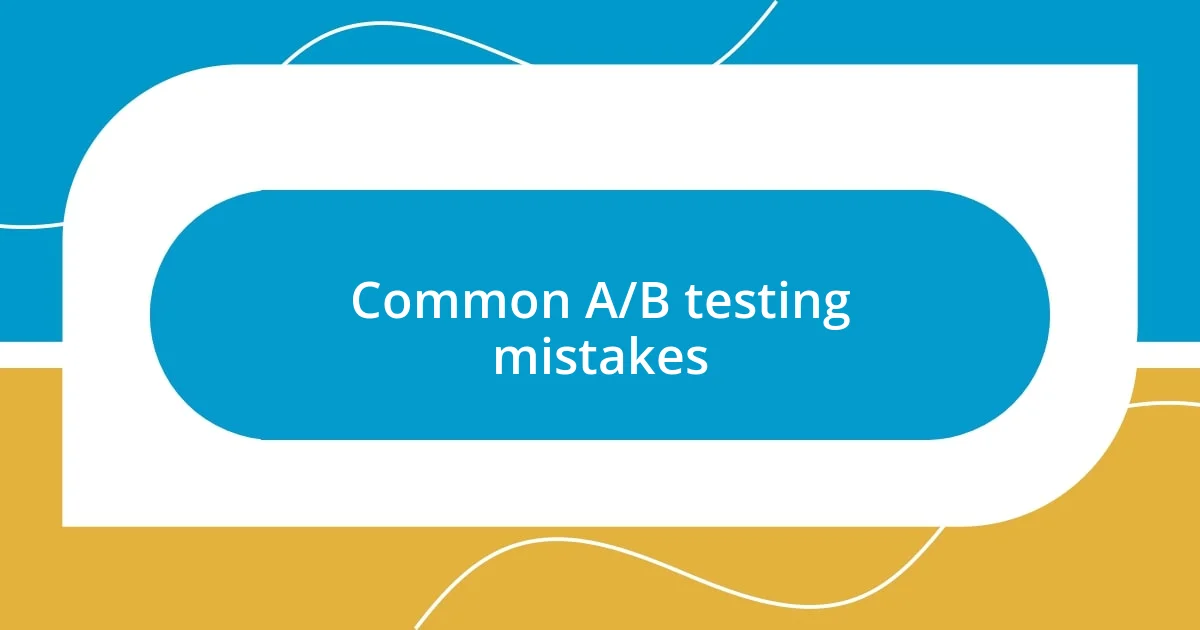
Common A/B testing mistakes
When it comes to A/B testing, I’ve seen several common mistakes that can derail even the best intentions. One significant error is running tests for too short a duration. I once launched a test over a holiday weekend, assuming that strong traffic would yield quick results. However, the data I gathered was skewed and didn’t reflect typical user behavior. Patience is vital; collecting data for a full cycle ensures you’re making decisions grounded in reality.
Another frequent misstep is testing too many variables at once. I recall a scenario where a colleague changed the headline, image, and call-to-action button simultaneously. We ended up with inconclusive results and no clear insights on what actually worked. To avoid confusion, it’s best to isolate changes and keep tests straightforward. Here are a few critical pitfalls to watch out for:
- Short Test Duration: Skimps on data quality by not allowing enough time for normal behavior patterns.
- Multiple Variables: Clouds the effectiveness of specific changes by combining too many elements.
- Ignoring Segmentation: Fails to account for different target audiences and their unique preferences.
- Lack of Statistical Rigor: Jumps to conclusions without ensuring data validity or significance.
- Inconsistent Sample Sizes: Undermines results by not maintaining uniformity in test groups.
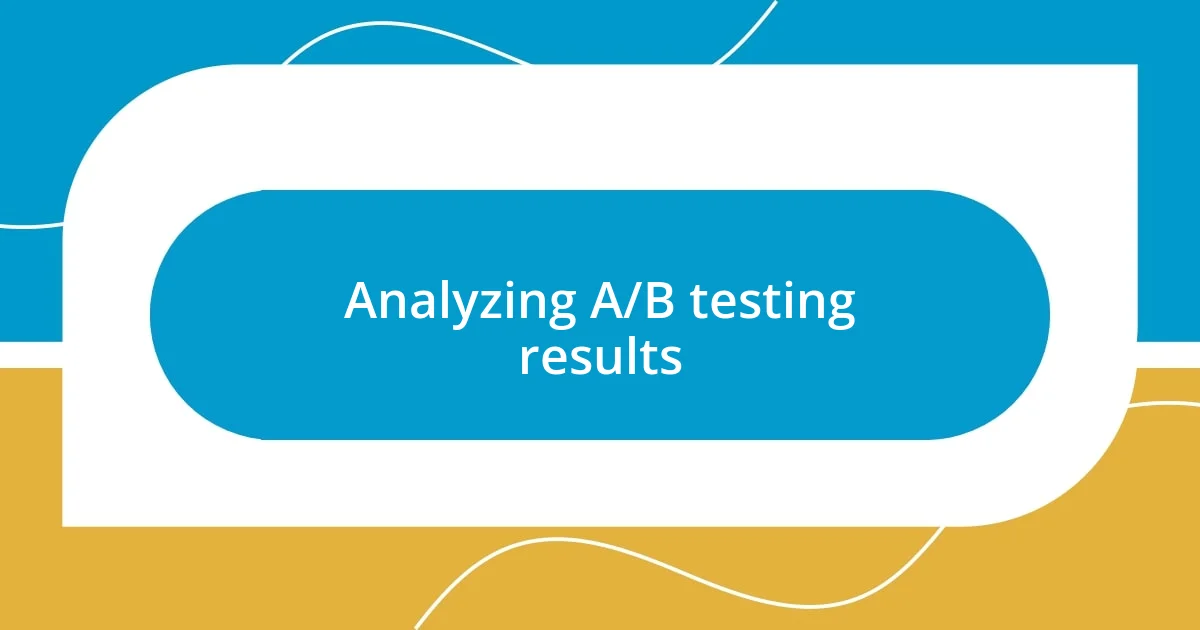
Analyzing A/B testing results
When I’m deep in the A/B testing analysis, I always remind myself to look beyond the numbers. It can be tempting to focus solely on the winner of the test, but I’ve found that understanding the ‘why’ behind the results is equally crucial. For example, I once ran a test where a slight tweak in the email subject line led to a surprising increase in opens—what fascinated me was identifying the emotional response it triggered. This kind of insight shapes how I approach future campaigns.
Diving into the data also means asking the right questions. Are there particular segments of my audience that responded better to one variant? In one testing phase, I discovered that younger customers preferred a more playful tone in our messaging, while older ones favored straightforwardness. This nuance not only helped in refining our emails but also sparked a series of personalized campaigns tailored to different demographics, leading to improved engagement and satisfaction.
Lastly, I can’t stress enough the value of visualizing the results. I once made it a habit to create simple graphs and charts to represent the data. This approach allowed me to detect trends and shifts that raw data might obscure. After all, who wouldn’t want a clear picture of their test’s impact? Finding clarity in complexity has transformed how I strategize my e-commerce initiatives, and it’s something I wholeheartedly recommend to anyone venturing into A/B testing.
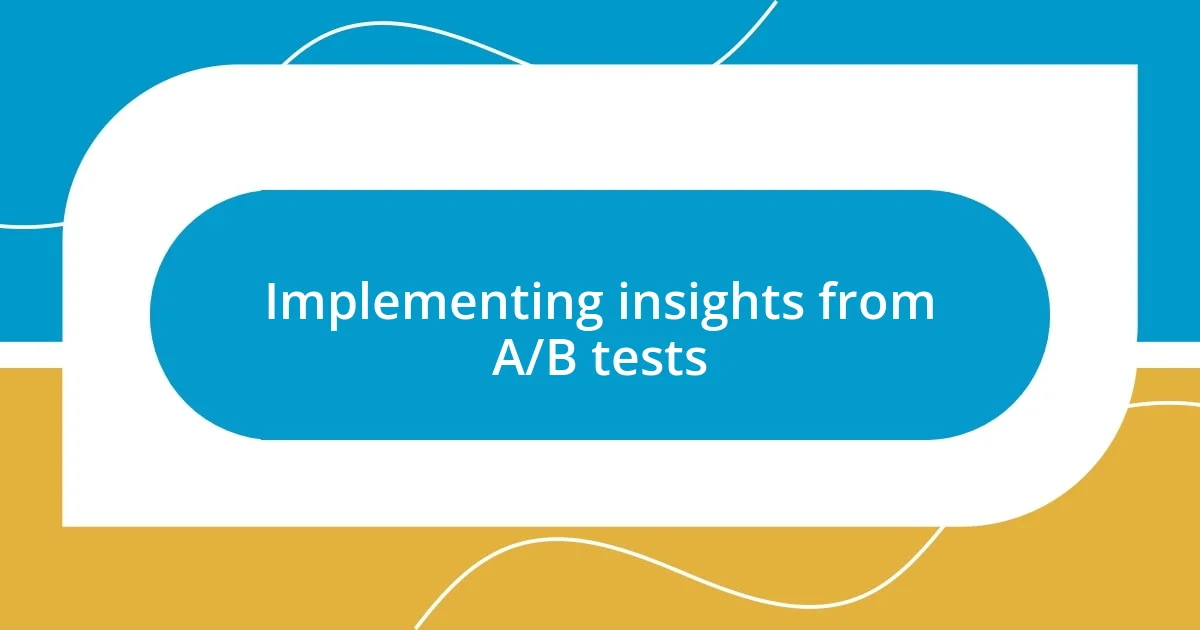
Implementing insights from A/B tests
When it comes to implementing insights from A/B tests, I always feel a rush of excitement about transforming data into action. For instance, after discovering that a button color significantly boosted conversions, I eagerly updated our site to incorporate that color across other key calls-to-action. The result wasn’t just an increase in sales; seeing the team rally around data-driven decisions ignited a newfound enthusiasm in our approach.
I remember a time when, after running an A/B test for a new product page layout, we noticed a marked increase in customer engagement. Evaluating how visitors engaged with the new design became crucial. Rather than just sticking to the successful layout, we brainstormed further enhancements, like adding customer testimonials and clearer image displays. This iterative experimentation taught me that implementing A/B test insights is not merely about one-off changes; it’s a continuous journey of improvement.
Sometimes, I think about how vital it is to share these insights with the whole team. After one particularly insightful test, I organized a casual lunch-and-learn session where we discussed our findings. Sharing not just the ‘what’ but also the ‘why’ behind our successes helped everyone feel more connected to the data. Who wouldn’t be motivated when they clearly see the impact of their work? Implementing learnings from A/B tests has that potential—not just for enhancing e-commerce strategies, but for fostering a culture of collaboration and growth.












